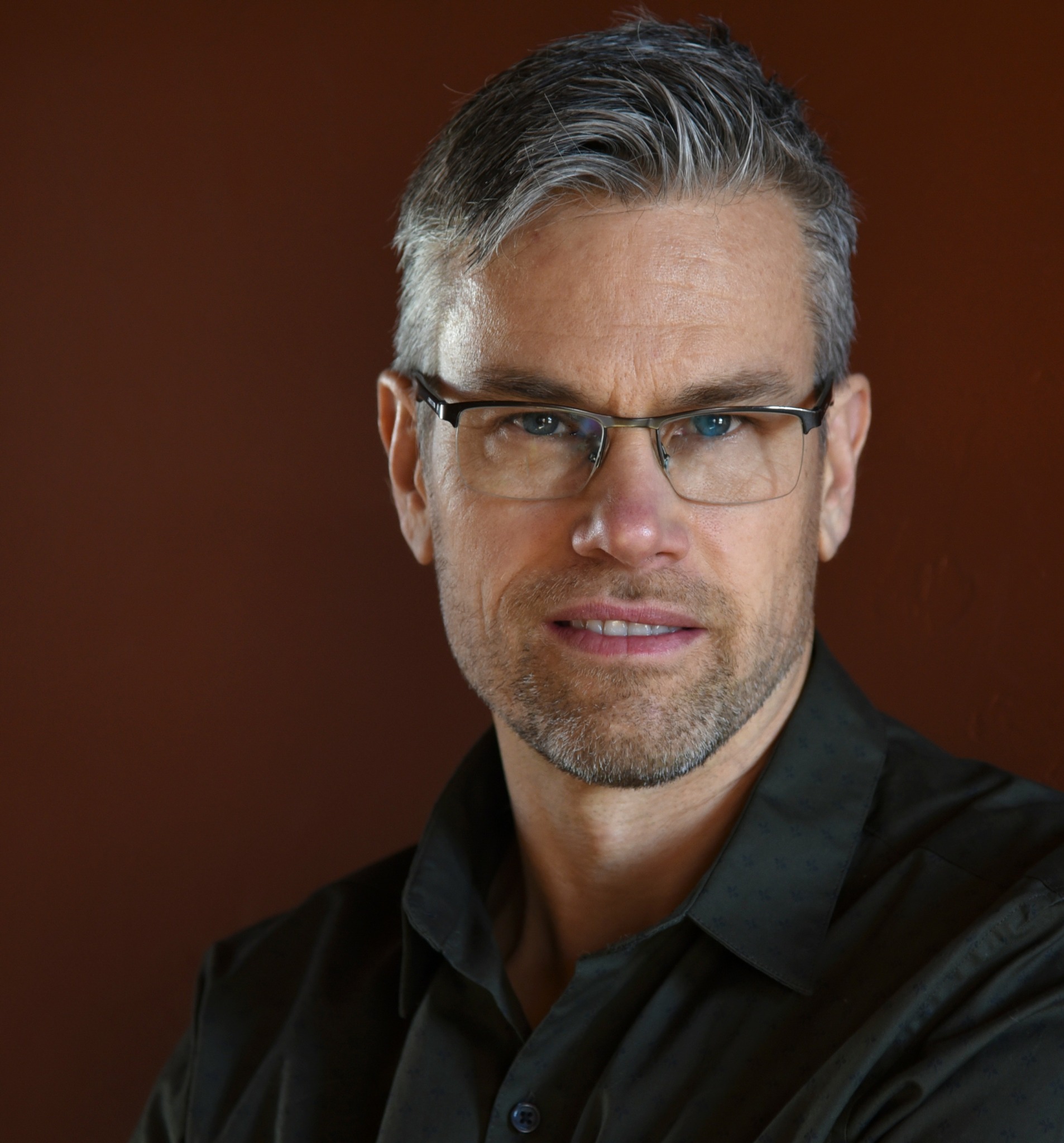We were lucky to catch up with Daniel Gerhartz recently and have shared our conversation below.
Daniel, looking forward to hearing all of your stories today. What’s the kindest thing anyone has ever done for you?
I’m going to interpret this question slightly differently than most . When I think about the kindest encouragement I’ve ever received about my work, one moment stands out. A number of years ago, I had a client from Asia who had been collecting my paintings for some time, and I eventually had the chance to travel there and meet them in person. I was a little nervous, a new country, language barrier, and not sure what to expect. But we ended up connecting on such a deep level.
As it turned out, both of our fathers had passed away around the same time, and we found ourselves processing that shared grief together over dinner at this beautiful restaurant overlooking the city.
At some point in the conversation, the gentleman turned to me and said something I’ll never forget. He told me he was raised in a tradition that didn’t believe in God, but when he looked at my work, he wanted to believe in God.
That just floored me. It’s exactly what I hope my work can do—point to something beyond myself, specifically, a magnificent God that loves us. Not to draw attention to me, but to the beauty, the harmony, the design that already exists in the world and that I’m just trying to reflect. That moment—him saying that—was by far the most meaningful compliment I’ve ever received. I couldn’t have written it better myself.
And I don’t mean to over-spiritualize it, but the truth is, as artists, we often get a lot of praise, and it can be easy to soak that in. I’ve sat on panels next to big names and what always struck me was how rarely anyone acknowledged the source of all this beauty we’re trying to capture. It’s like, what are we doing here if we’re not going to give credit where it’s due?
When I see the design of a single blade of grass or the mechanics of a cat walking—every muscle, every bone, every movement—it’s overwhelming. I’m just smearing colored mud on cloth, trying to echo that in two dimensions. I can’t take credit for the beauty; I’m copying it. And the fact that it touches people, that it blesses them—that’s the real gift. That’s what I’m grateful for.


As always, we appreciate you sharing your insights and we’ve got a few more questions for you, but before we get to all of that can you take a minute to introduce yourself and give our readers some of your back background and context?
I’ve always been drawn to beauty. Whether it’s the harmony of color on a leaf, the curve of a simple line, or even a well-crafted mechanical design…those things stir a sense of wonder in me.
Painting became a way for me to capture and share that wonder. Like going to a concert or tasting a great meal with someone you love, it’s so much richer when it’s shared. That’s what painting does—it’s my way of saying, “Did you see this? Isn’t this exquisite?”
But I didn’t grow up thinking I’d be an artist. As a kid, I was kind of insecure and unsure of myself. I wasn’t especially talented or athletic, but I loved being outdoors—fishing, hunting, wandering through the Wisconsin countryside with my dad. He worked for the Department of Natural Resources and was always pointing things out to us—snapping turtles, birds, streams. He had this deep appreciation for the natural world that definitely rubbed off on me. And music was always around, too. My dad sang in acappella groups, and we’d go to his concerts all the time. At the time I might’ve rolled my eyes, but that exposure to harmony—musical, visual—it all sank in.
I didn’t really start drawing until middle school. One rainy day, a friend and I pulled out some Walter Foster “how to” drawing books and gave it a try. I drew a duck, entered it into a contest, and won. That little spark was enough. In high school, I had a phenomenal art teacher. He taught me the fundamentals of drawing, design and discipline. By senior year, I was spending four hours a day in the art room.
From there, I went to art school in Chicago, thinking I’d be totally out of my league. But that high school teacher gave me such a solid base that I held my own. I studied commercial art, because that’s the only career path I thought existed for someone who could draw. After two years, I got a job designing packaging—Kleenex boxes and tampon dispensers. It wasn’t exactly thrilling.
But around that time, I met Richard Schmid and a group of like-minded artists, including my friend Tim Lawson. That meeting changed everything. Richard opened my eyes to the world of fine art and plein air painting. Tim encouraged me to get a French easel and showed me his own plein air work—he had just sold a painting for $200. That was huge to us back then. We took painting trips out west, and I just fell in love with the process.
After about a year and a half in commercial art, I realized I just couldn’t do it anymore. I wasn’t inspired. So I gave myself six months—saved up, moved back in with my folks, painted every day, and started submitting to galleries. I remember working in my parents’ garden when my mom brought me an envelope containing my first check from a gallery in Oklahoma. It was $300 for two paintings. That was the beginning.
From there, things gradually built. I met some great people in the industry—Dan Blanchard and Walter Gray, who ran a gallery out of their home and supported me like family. They introduced me to the team at the National Cowboy Museum, and not long after, I was invited to show at the Prix de West. That was a turning point. I started winning awards, and everything took off from there.
I don’t know if I can say what I’m most proud of. I’ve been blessed to make a living doing this for 38 years. I’m proud of my family—my wife, my kids—and just trying to do whatever is in front of me with integrity, whether it’s painting, being a dad, a husband, a teacher, or just a decent human being.
And teaching—it’s a huge part of my life now. Richard was so generous with what he gave me, and I feel a real responsibility to pass that on. Through our “Sharing the Journey” membership group, I get to work with people from all over the world and share what I’ve learned. My goal is always to help others create more beauty. The world needs it—especially now. If I can contribute to that, in some small way, I’m grateful.


Can you tell us about a time you’ve had to pivot?
For years, decades, really, my teaching was always in person. That was the model: workshops, live demonstrations, face-to-face time with students. I’d been doing it that way for 30 years, and honestly, I loved it. There’s something really powerful about that live interaction, the energy in the room, being able to walk around and give someone direct feedback as they’re painting. It was all very organic and hands-on.
But then COVID hit, and everything changed. Like a lot of artists and teachers, I suddenly found myself having to rethink everything. The workshops were off the table. No one was traveling. And there was this big question mark: “How do I keep teaching? How do I keep serving students and sharing what I know if I can’t be in the same room with them?”
That’s really when the pivot happened. I had done a couple of videos in the past and during the lockdowns, I began thinking more seriously about how to make teaching work in this new world.
I had this idea for a small series—three videos focused on core painting fundamentals: values, color, and edges. And right around that time, I came across the work of Graham Cochran. He’s an online entrepreneur and educator who wrote a book How to Get Paid for What You Know about building a business from what you already know.
Graham’s ideas were hugely helpful. He talked about the importance of having a diversified offering: one-off products, like downloadable videos, and also something more sustainable—like a membership model. That really got my wheels turning. Up to that point, I hadn’t thought about a membership course. But what he was saying made sense. It wasn’t just about putting content out there; it was about creating a structure where people could grow over time, engage regularly, and feel part of a community.
So all of that came together—the shutdown, the need to adapt, the encouragement from people I knew and the strategic insights from Cochran. That’s how Through the Eyes of an Artist came to be. It started with a handful of videos and grew into Sharing the Journey, an online membership course where I could teach, mentor, and connect with students all over the world—not just once a year in a workshop, but on an ongoing basis. Sharing the Journey available at… http://danielgerhartzteaches.com/membership
Looking back, the pivot wasn’t just a response to a crisis. It ended up being a blessing. It opened doors I never would’ve considered before, and it’s allowed me to reach people I never could have reached otherwise. I’m still amazed by how it all unfolded.


Are there any books, videos, essays or other resources that have significantly impacted your management and entrepreneurial thinking and philosophy?
Other than the book by Graham Cochrane that I already mentioned, How to Get Paid for What You Know, there’s a quote by C.S. Lewis that I keep coming back to.
I’ve always loved Lewis’s writing; he’s one of my favorite authors. There’s such depth and clarity in how he writes about beauty and longing. This particular quote really sums up so much of how I feel about art and why I paint.
He says: “The books or the music in which we thought the beauty was located will betray us if we trust to them; it was not in them, it only came through them, and what came through them was longing. These things—the beauty, the memory of our own past—are good images of what we really desire; but if they are mistaken for the thing itself they turn into dumb idols, breaking the hearts of their worshipers. For they are not the thing itself; they are only the scent of a flower we have not found, the echo of a tune we have not heard, news from a country we have never yet visited.”
That’s just so beautiful and it hits a deep chord in me.
What he’s saying is that the beauty we see in art or music, or even in nature or relationships, it’s not the final destination. It’s not the ultimate thing we’re longing for—it’s a glimpse, a whisper of something more. It comes through those things, not from them. And if we mistake the thing—say, a painting, or a sunset—for the source of the beauty itself, we’ll be let down. It’ll never fully satisfy. But if we see it as a window into something greater—something eternal—then it lifts us up. It points us beyond ourselves.
That idea has completely shaped how I see art. When I paint, I’m not just trying to capture something pretty or technically accurate. I’m trying to reach for that echo of a tune, that scent of a flower that Lewis talks about. I want the viewer to feel a sense of longing, of hope—even if they don’t quite know why. Because that’s what beauty does when it’s done well: it awakens something in us that says, “There’s more. There’s something beyond this world.”
That hope—that there’s something greater waiting, something eternal—is what drives me. It’s what motivates me to push harder in my work, to refine, to strive for excellence. Not perfection for its own sake, but as a way of honoring that deeper truth. I think that’s really at the heart of why I do what I do. Beauty points us to something bigger, and that, to me, is thrilling.
Contact Info:
- Website: https://www.danielgerhartz.com




